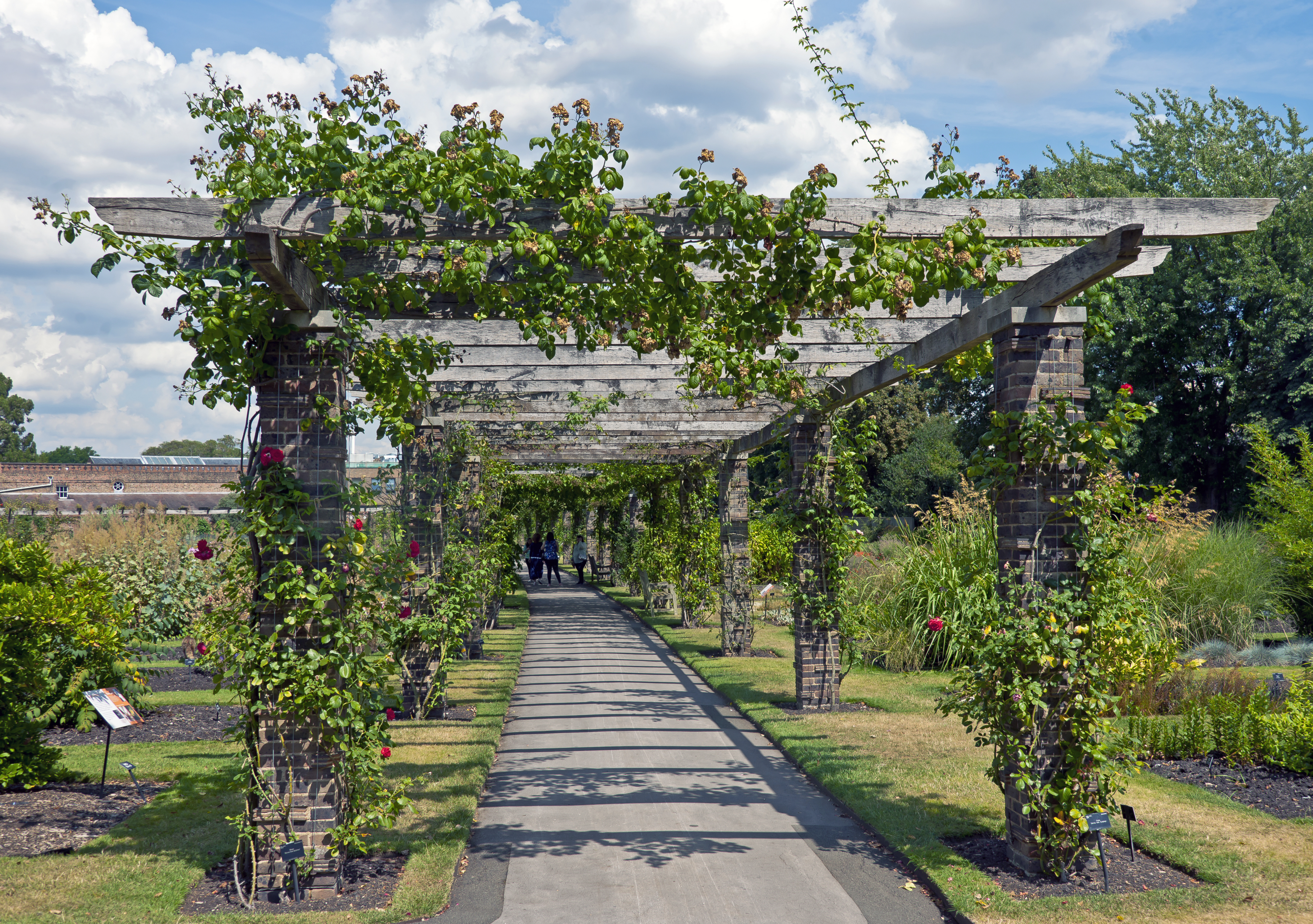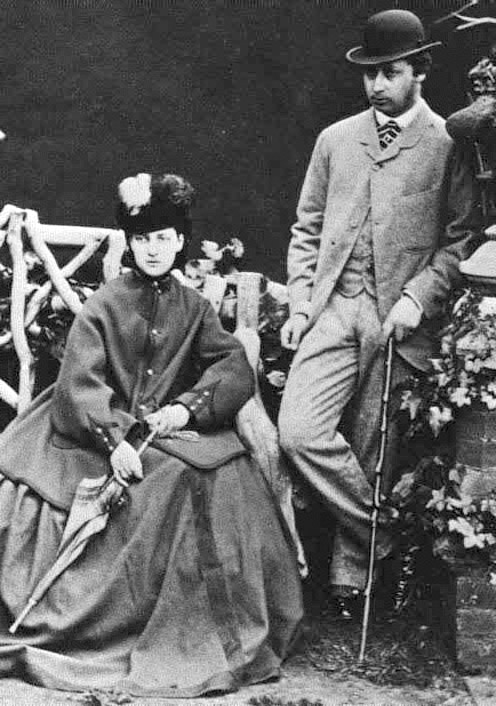|
Mount Storm Park
Mount Storm Park is a City of Cincinnati municipal park situated on a site on the western slope of a hill overlooking the Mill Creek Valley. In the mid-19th century the property comprised the site of the estate of Robert Bonner Bowler, a dry goods entrepreneur and one-time Mayor of the Cincinnati neighborhood of Clifton. While visiting in Austria, Bowler met Adolph Strauch of the Vienna Imperial Gardens and invited him to visit if he came to America. Strauch did visit during a scheduled train layover and remained to develop the Bowler Estate. "Mr. Strauch designed the Temple of Love in 1845, which still stands as an outstanding landmark to Mt. Storm today. The white columns of this Corinthian style pergola, which can be seen on the east lawn, was once the cover for a reservoir that supplied water to Mr. Bowler's seventeen greenhouses, gardens, orchards, and a waterfall and swan lake on which seven black swans swam." Bowler hosted a number of prominent guests at the estat ... [...More Info...] [...Related Items...] OR: [Wikipedia] [Google] [Baidu] |
Cincinnati
Cincinnati ( ; colloquially nicknamed Cincy) is a city in Hamilton County, Ohio, United States, and its county seat. Settled in 1788, the city is located on the northern side of the confluence of the Licking River (Kentucky), Licking and Ohio River, Ohio rivers, the latter of which marks the state line with Kentucky. It is the List of cities in Ohio, third-most populous city in Ohio and List of united states cities by population, 66th-most populous in the U.S., with a population of 309,317 at the 2020 census. The city is the economic and cultural hub of the Cincinnati metropolitan area, Ohio's most populous metro area and the Metropolitan statistical area, nation's 30th-largest, with over 2.3 million residents. Throughout much of the 19th century, Cincinnati was among the Largest cities in the United States by population by decade, top 10 U.S. cities by population. The city developed as a port, river town for cargo shipping by steamboats, located at the crossroads of the Nor ... [...More Info...] [...Related Items...] OR: [Wikipedia] [Google] [Baidu] |
Mill Creek (Ohio)
The Mill Creek is a stream in southwest Ohio. It flows U.S. Geological Survey. National Hydrography Dataset high-resolution flowline dataThe National Map, accessed May 26, 2011 southwest and south from its headwaters in Liberty Township of Butler County through central Hamilton County and the heart of Cincinnati into the Ohio River just west of downtown. The section of Interstate 75 through Cincinnati is known as the Mill Creek Expressway. The Mill Creek Valley is a remnant of the Deep Stage Ohio River from the days of the Last Glacial Maximum. The stream, with its water power and valley, were important to the development of Cincinnati. Then, for a time, the steep hillsides that surround the creek limited expansion and gave impetus to the free growth of surrounding communities that were over that barrier. Finally, inclined planes solved the problem, before highways and automobiles eliminated it. Pollution Throughout Cincinnati's history, Mill Creek has been the scene of hea ... [...More Info...] [...Related Items...] OR: [Wikipedia] [Google] [Baidu] |
Clifton, Cincinnati
Clifton is one of the 52 List of Cincinnati neighborhoods, neighborhoods of Cincinnati, Ohio. The population was 8,408 in the 2020 census. The area includes the Ludlow Avenue Shopping and Dining District. Clifton is situated around Clifton Avenue, north of Dixmyth Avenue, approximately three miles north of Downtown Cincinnati. Several historic buildings and homes remain in the neighborhood. Clifton was developed in large part due to the expansion of the Streetcars in Cincinnati, street car system in the 1880s-1890s. Adjacent areas such as Corryville, Cincinnati, Corryville and the CUF, Cincinnati, CUF neighborhoods are often erroneously referred to as Clifton, even by long-term residents. History Clifton was incorporated as a village in 1850. The village took its name from the Clifton farm, which contained of hills and dales. In the nineteenth century, mansions set in extensive grounds of gardens, parkland and woodlands dominated the northern section of Clifton, farther from ... [...More Info...] [...Related Items...] OR: [Wikipedia] [Google] [Baidu] |
Adolph Strauch
Adolph Strauch (b. August 30, 1822 – 1883) was a renowned landscape architect born in Silesia, Prussia, known particularly for his layout designs of cemeteries like Spring Grove Cemetery in Cincinnati, Ohio, Forest Lawn in Buffalo, NY and Oak Woods Cemetery in Chicago, Illinois. Strauch also laid out many parks in Cincinnati, Ohio, including Eden Park, Burnet Woods and Lincoln Park. Strauch was hired by Spring Grove Cemetery in 1855 to handle the landscaping, and became superintendent of the place by 1859. He also designed Greenwood Cemetery (Hamilton, Ohio). Biography Born in the province of Silesia of Prussia in 1822, Strauch began learning the art of landscaping around 1838, at age sixteen, when he studied in Vienna, Austria, under gardeners at Schönbrunn Palace and Schloss Laxenburg. It was at Schönbrunn Palace that he became recognized in the craft by Hermann von Pückler-Muskau, who praised his work and befriended Strauch. By 1845 Strauch had left Vienna to g ... [...More Info...] [...Related Items...] OR: [Wikipedia] [Google] [Baidu] |
Corinthian Order
The Corinthian order (, ''Korinthiakós rythmós''; ) is the last developed and most ornate of the three principal classical orders of Ancient Greek architecture and Ancient Roman architecture, Roman architecture. The other two are the Doric order, which was the earliest, followed by the Ionic order. In Ancient Greek architecture, the Corinthian order follows the Ionic in almost all respects, other than the capitals of the columns, though this changed in Roman architecture. A Corinthian capital may be seen as an enriched development of the Ionic capital, though one may have to look closely at a Corinthian capital to see the Ionic volutes ("helices"), at the corners, perhaps reduced in size and importance, scrolling out above the two ranks of Acanthus (ornament), stylized acanthus leaves and stalks ("cauliculi" or ''caulicoles''), eight in all, and to notice that smaller volutes scroll inwards to meet each other on each side. The leaves may be quite stiff, schematic and dry, or t ... [...More Info...] [...Related Items...] OR: [Wikipedia] [Google] [Baidu] |
Pergola
A pergola is most commonly used as an outdoor garden feature forming a shaded walkway, passageway, or sitting area of vertical posts or pillars that usually support crossbeams and a sturdy open lattice, often upon which woody vines are trained. The origin of the word is the Late Latin ''pergula'', referring to a projecting eave. It also may be an extension of a building or serve as protection for an open terrace or a link between pavilions. They are different from green tunnels, with a green tunnel being a type of road under a canopy of trees. Depending on the context, the terms "pergola", "bower", and "arbor" are often used interchangeably. An "arbor" is also regarded as being a wooden bench seat with a roof, usually enclosed by lattice panels forming a framework for climbing plants; in evangelical Christianity, brush arbor revivals occur under such structures. A pergola, on the other hand, is a much larger and more open structure. Normally, a pergola does not include ... [...More Info...] [...Related Items...] OR: [Wikipedia] [Google] [Baidu] |
Edward VII Of The United Kingdom
Edward VII (Albert Edward; 9 November 1841 – 6 May 1910) was King of the United Kingdom and the British Dominions, and Emperor of India, from 22 January 1901 until his death in 1910. The second child and eldest son of Queen Victoria and Prince Albert of Saxe-Coburg and Gotha, Edward, nicknamed "Bertie", was related to royalty throughout Europe. He was Prince of Wales and heir apparent to the British throne for almost 60 years. During his mother's reign, he was largely excluded from political influence and came to personify the fashionable, leisured elite. He married Princess Alexandra of Denmark in 1863, and the couple had six children. As Prince of Wales, Edward travelled throughout Britain performing ceremonial public duties and represented Britain on visits abroad. His tours of North America in 1860 and of the Indian subcontinent in 1875 proved popular successes. Despite the approval of the public, his reputation as a playboy prince soured his relationship with his mo ... [...More Info...] [...Related Items...] OR: [Wikipedia] [Google] [Baidu] |
Charles Dickens
Charles John Huffam Dickens (; 7 February 1812 – 9 June 1870) was an English novelist, journalist, short story writer and Social criticism, social critic. He created some of literature's best-known fictional characters, and is regarded by many as the greatest novelist of the Victorian era.. His works enjoyed unprecedented popularity during his lifetime and, by the 20th century, critics and scholars had recognised him as a literary genius. His novels and short stories are widely read today. Born in Portsmouth, Dickens left school at age 12 to work in a boot-blacking factory when his father John Dickens, John was incarcerated in a debtors' prison. After three years, he returned to school before beginning his literary career as a journalist. Dickens edited a weekly journal for 20 years; wrote 15 novels, five novellas, hundreds of short stories and nonfiction articles; lectured and performed Penny reading, readings extensively; was a tireless letter writer; and campaigned vigor ... [...More Info...] [...Related Items...] OR: [Wikipedia] [Google] [Baidu] |
Samuel Hannaford
Samuel Hannaford (10 April 1835 – 7 January 1911) was an American architect based in Cincinnati, Ohio. Some of the best known landmarks in the city, such as Music Hall and City Hall, were of his design. The bulk of Hannaford's work was done locally, over 300 buildings, but his residential designs appear through New England to the Midwest and the South. Biography Born in England, Hannaford immigrated with his family to Cincinnati at age nine. Hannaford attended public schools and graduated from Farmer's College, Cincinnati, where he studied architecture. Hannaford opened an office in 1857 and in 1887 formed the firm of Samuel Hannaford & Sons. At the time of his death, he was director of the Ohio Mechanics' Institute. Hannaford died in his home in Cincinnati on 7 January 1911. List of works This list includes works by Samuel Hannaford and, after 1904, works by his firm Samuel Hannaford and Sons. Cincinnati * Northside Methodist Church (1893) * Our Lady of Mercy High ... [...More Info...] [...Related Items...] OR: [Wikipedia] [Google] [Baidu] |




